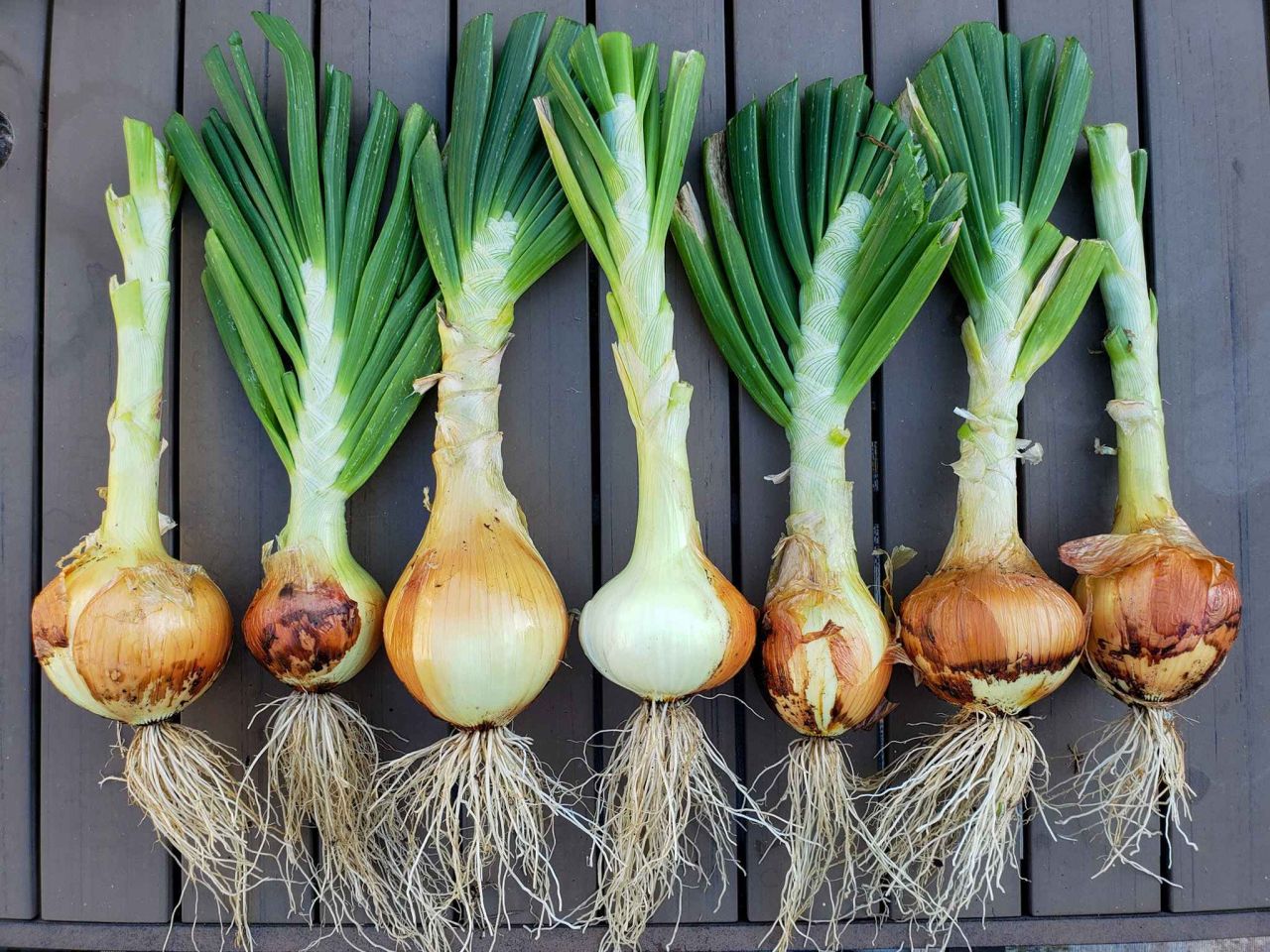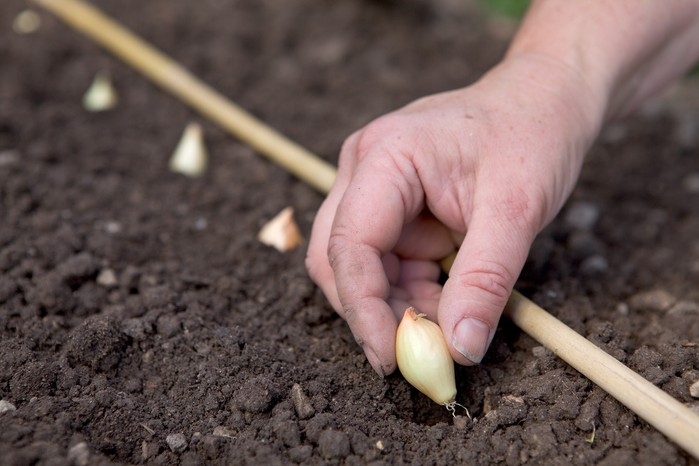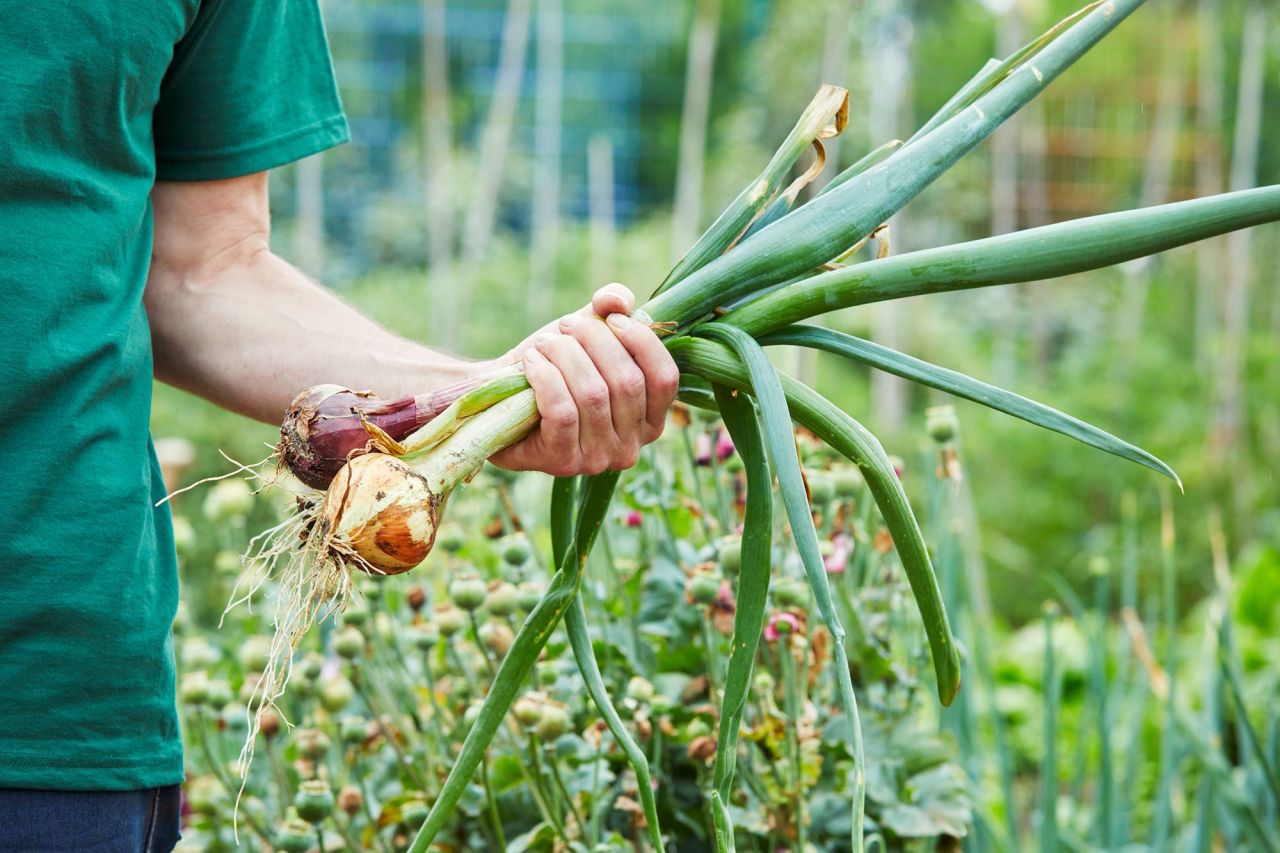Growing Onions
Onion cultivation is a rewarding and efficient process. It’s simple to grow onions; all you need is to plant a small seedling in a hole in the ground. If you can’t plant immediately, keep the seedlings in a bucket with moist soil at the bottom, away from direct sunlight.


Here's a quick guide to onion cultivation:
- Choose a sunny location with fertile, well-drained soil with a pH of 6.0 to 6.8.
- Enhance your soil with aged compost or rich organic matter.
- Keep the soil moist as onions have shallow roots and aren’t great at absorbing water.
- Feed your onions with a continuous-release plant food for best results.
- Harvest onions at any size that suits your culinary needs.
For soil, planting, and care:
- Most gardeners prefer sweet onions. The sweetness depends on both the variety and the growing conditions.
- Onions require plenty of sun, good drainage, and a soil pH between 6.0 and 6.8.
- Raised beds or mounded rows are ideal for onion cultivation, especially in heavy clay soil.
- Plant onions 1 inch deep and 6 inches apart in furrows 12 inches apart.
- Keep the soil continuously moist until the bulbs enlarge.
- Mulch lightly with weed-free, herbicide-free grass clippings or another fine mulch.


Troubleshooting:
- Watch out for tiny black onion thrips and aphids, which suck sap from onion leaves.
- Wilted plants may be infested with onion root maggots.
Harvest and Storage:
- Harvest young onions a few weeks after planting for use as “spring onions” or scallions.
- For full-sized bulbs, let onions grow and mature until the tops turn yellow and fall over.
- After harvesting, lay onions out to cure with the tops still attached in a warm, airy location.
- After 7 to 10 days, clip off the tops and roots, remove as much dry dirt as possible, and store in a cool place. Very sweet, juicy onions may be stored in the fridge, wrapped in newspaper or paper towels.


